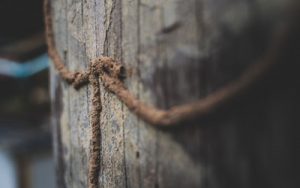 Termites are often only discovered when the damage starts to appear, making them one of the most dangerous pest problems. In order to avoid the destruction associated with termite activity, it’s important to recognize the early signs of termites in your home. With termites at peak activity in the spring and summer, now is the time to ensure you are protected against an infestation! The termite experts at Active Pest Control are here to share their knowledge on the top signs of termites they see in Georgia homes year-round.
Termites are often only discovered when the damage starts to appear, making them one of the most dangerous pest problems. In order to avoid the destruction associated with termite activity, it’s important to recognize the early signs of termites in your home. With termites at peak activity in the spring and summer, now is the time to ensure you are protected against an infestation! The termite experts at Active Pest Control are here to share their knowledge on the top signs of termites they see in Georgia homes year-round.
How to Tell if You Have Termites
If you notice any of the following signs of termites, it’s time to call a professional who can further investigate and determine the presence or absence of termites in your home. Here’s what to look for:
Swarming Termites
Every year, reproductive termites will leave their colony to mate and form new ones. Swarming happens when a mature termite colony releases a number of swarmers from their existing nest. Reproductive termites, also known as alates or swarmers, can often be mistaken for other flying insects, especially carpenter ants. Seeing winged termites in the spring months is a sign of termites spreading.
Piles of Termite Wings
After reproductive termites have swarmed and found a new location, they will literally twist their wings off to discard them. This is because, after flight, they will no longer need to fly. Termite wings are all the same size and translucent in color. These wings can often be seen in piles, which is indicative of termites forming their new colony nearby.
Mud Tubes
Made from and used by subterranean termites, mud tubes are pencil-sized tunnels through which termites travel. True to their name, subterranean termites nest underground. In order to leave the nest and forage for food, they will build mud tubs out of their feces. This protects the termites from outdoor elements as it blocks out cool, dry air. Seeing mud tubes along the outside of your property is likely the number one sign of termites.
Drywood Termite Frass
Unlike subterranean termites, drywood termites nest within wood. As they tunnel through dry wood as well as when they swarm, drywood termites create kick-out holes in the wood. This is when their droppings, also known as frass, can be found. Termite frass most closely resembles sawdust or coffee grounds, and can appear in piles. Seeing this sign of termites makes it important to call a professional for closer inspection.
Tight-Fitting Doors and Windows
Termite activity can result in damage to your property. One of the most common signs of termite infestations is noticing your windows and doors are sticking or appear more tight-fitting than usual. Subterranean termites output a lot of moisture with their eating and tunneling habits. When they target door or window frames, the wood there will warp and make them more difficult to open.
Damaged Wood
Termites are infamous for damaging wood. This can appear in several ways. Typically, termite damage can cause unexplained cracks on walls, beams, and rafters. It can cause sagging wood in your floors, as well as hollow-sounding wood. Sometimes wood damage can lead to weakened baseboards and floorboards. In general, wood damage of any kind can be a major sign of a termite problem.
What to Do When You See Signs of Termites
Termite problems are no joke. They can cause a lot of damage on your home. This is why it is so important to work with a professional termite exterminator. At Active Pest Control, we will provide yearly inspections to catch early signs of termites. To learn more, contact our team today!
How to Look For Signs of Termites in Georgia
Serving Your Pest Needs for Over 35 Years Across Georgia
McDonough | Conyers | Lawrenceville | Alpharetta | Marietta | Columbus
Newnan | Locust Grove | Rome | Atlanta | Brunswick | Byron | Augusta | Savannah
Home » How to Look For Signs of Termites
